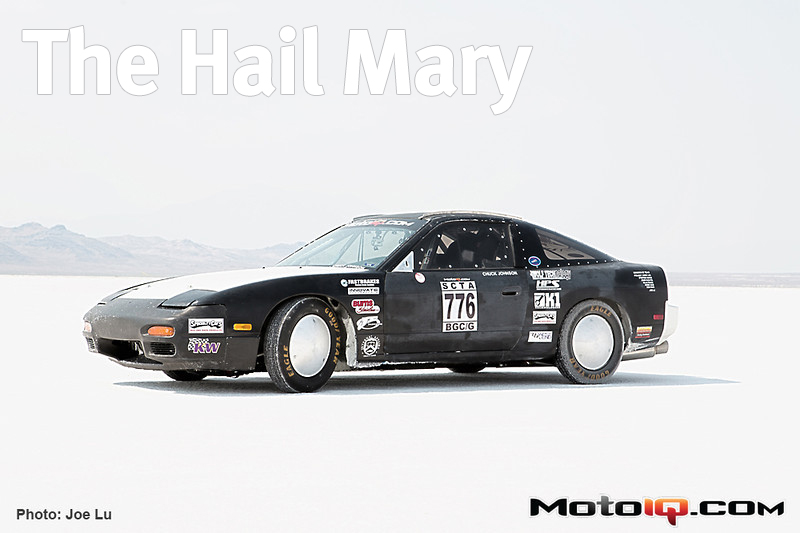,
 |
With the intention of storing a large amount of frigid ice water, we mounted a 22 gallon Jaz plastic fuel cell where the passenger seat once existed in Project 240SX LSR. Sorry guys, no 200 MPH ride-alongs will be given. Although an aluminum fuel cell would have had a nice “bling” factor, plastic has a much lower rate of thermal conductivity than aluminum. In other words, plastic does a better job of keeping whatever is inside of it cool. This is why the beer cooler you tailgate with at the football game is plastic, not aluminum. The lower thermal conductivity of our plastic fuel cell, or water tank, would minimize the amount of time we would need to drain and refill it on the salt. Besides, Bonneville is like a desert and the only thing harder to find in the desert than water is ice. Get the point?
 |
There were a few reasons we chose a 22 gallon tank. We learned from the Hondata crew that a 20 gallon water tank was more than enough volume to complete a couple runs at Bonneville with. Also, we wanted to maximize the weight of the car to increase high speed stability. Water weighs approximately 7.5 pounds per gallon. Multiply that by 22 gallons and you’ve got a good 165 pounds of useful ballast. Then, place the water tank in the passenger seat area along with the fire system and we’ve perfectly offset my weight, preserving side to side weight distribution. Later on, we’ll cover in detail how perfect Project 240SX LSR’s weight distribution from front to back and side to side wound up.
 |
Since we were using a fuel cell as a water tank, some changes needed to be made before it could effectively act as sump for our charge cooling ice water. To begin, an Earl’s bulkhead fitting was placed into a hole we drilled into the lower portion of the tank.
 |
An Earl’s bulkhead fitting is a three piece design with the body being made up of two threaded sections separated by a hex head. The second and third piece are made up of a nylon washer and a nut which screws onto the first machined body. This design ensures a leak free connection when plumbing through a metal wall or in our case, a plastic tank.
 |
| A 90 degree -10 AN fitting with a 3/4 barbed end connects to a hose which runs to the water pump inlet. |
Since the Earl’s bulkhead fitting was threaded on both sides, it allowed us to make a connection to our water pump on one end; while on the opposite end, giving us the threads needed to rig up a metal filter.
 |
| This cylindrical metal filter was sourced from McMaster Carr and spends its days making certain that the water pump doesn’t suck in ice that might damage the pump’s impeller or clog the water line and Spearco intercooler. |



